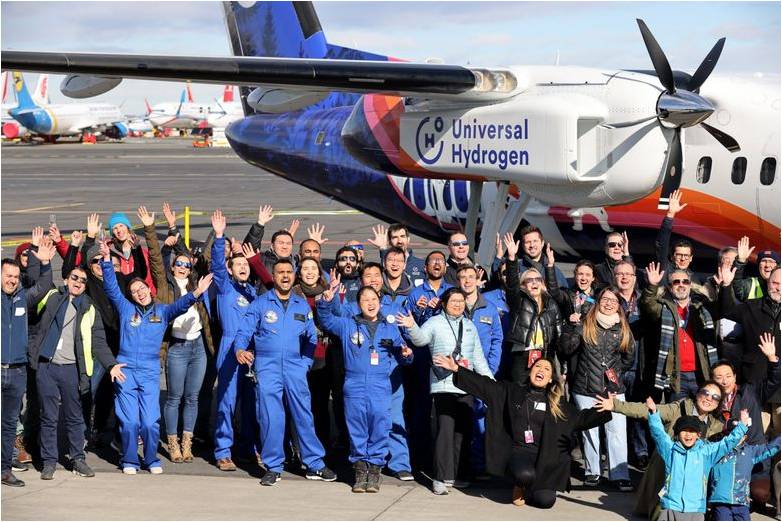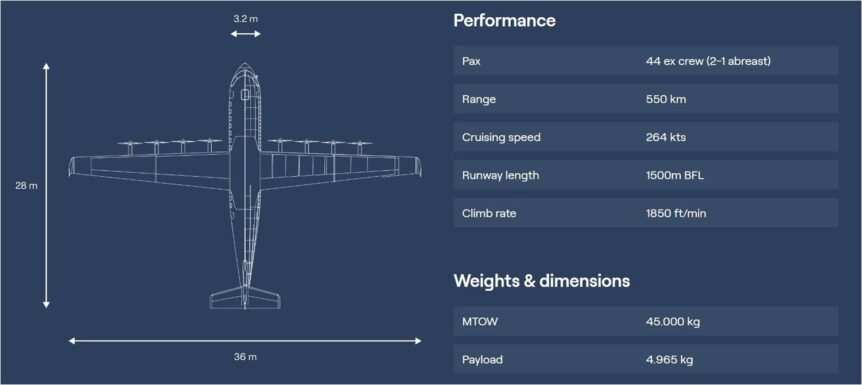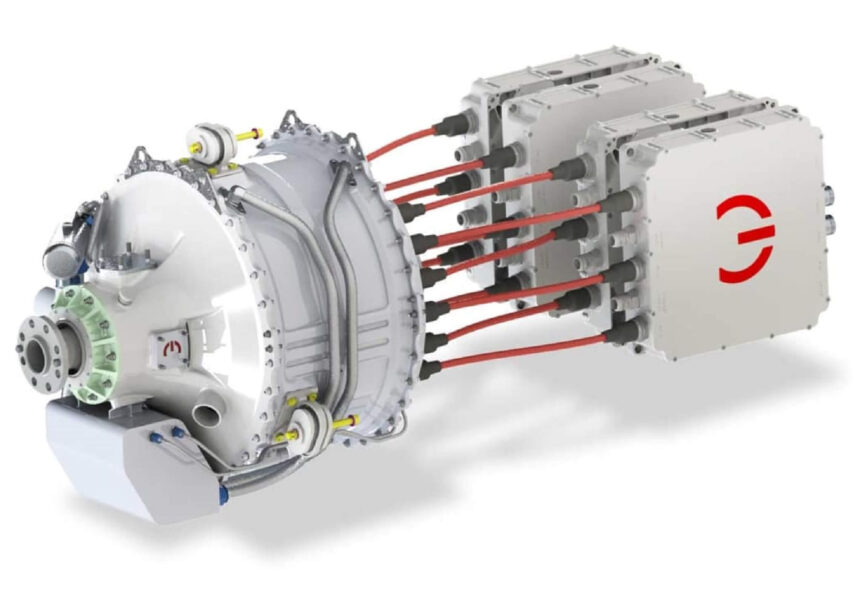Universal Hydrogen flew the largest hydrogen-powered aircraft yet at Grant County Airport in Moses Lake, Washington. The DeHavilland Dash 8 was powered on its right side by a MagniX motor and fueled by H2 from a pair of containers in the rear of the fuselage. It made a 15 minute flight to 3,500 feet and settled back to a safe landing It carried “the largest hydrogen fuel cell ever to power an aircraft, “and Universal Hydrogen co-founder and CEO Paul Eremenko “declared the moment the dawn of a new golden age of aviation.” Prep for flight Lightning McClean, Universal’s modified Dash 8, normally flies with up to 50 passengers. The penalty for using H2 for fuel is giving up 10 of those revenue-producing seats, Universal’s Plug Power containers taking up the back rows of the cabin. Other gear included a rigorous evaluation of every component and system, the Dash 8 was ready for taxiing and test flights. Two large hydrogen …
Delft’s Maeve 01 Dreams Big
The Maeve 01 is the latest big dream from The Netherlands’ Delft Technical University – which seems to be a resource-rich aeronautical community producing myriad flying machines. The airplane comes with a novel recharging system, the Maeve ReCharge network – all to provide “Aviation for a generation that wants to travel, not pollute.” The eight motors spanning its high-aspect ratio wings could be replaced by six, but that depends on replacing the eight 1.2 megawatt (1609 hp.) motors with 1.5 megawatt (2,012 hp.) units. This seems plausible, since Jeff Engler’s Wright Electric has recently tested a 2 megawatt (2,682 hp.) motor and ZeroAvia plans on delivering 2 MW units to retrofit DeHavilland Dash 8s within the next few years. One possible downside would be having less of the 36-meter (118.1 foot) wing swept by the propellers. Maeve founder Jan Willem Heinen explains the eight motors and their possible replacement by six more powerful units. “The reason why we went for …
MagniX Ready for New Markets
MagniX, the motor company powering Eviation’s Alice and Harbour Air’s Beaver, is expanding into new markets. Already flying in a DeHavilland Beaver in Canada and being readied for flight on Eviation’s Alice in Arlington, Washington, the company’s motors have many potential airframes to grace. Besides Harbour Air and Eviation, English firm Faradair has chosen MagniX to power its BEHA, a triplane configuration commuter, and Sydney Seaplanes wants MagniX power for its Cessna Caravan Supplemental Type Certificate. On a grander scale, Universal Hydrogen will power its converted DeHavilland Dash 8s with MagniX. Even NASA has awarded funding to MagniX (along with General Electric) to develop “Electrified Aircraft Propulsion (EAP) technologies through ground and flight demonstrations. “ Harbour Air’s Beaver A 1957 de Havilland of Canada Beaver, C-FJOS, had its original Pratt & Whitney P-985 Wasp Junior radial piston engine replaced with a Magnix 750hp (559kW) Magni500 electric powerplant. It first flew on electric power on December 10, 2019. On August 19, …
Two Similar eSTOLs
Two different but very similar electric Short Take Off and Landing (eSTOL) aircraft from two different companies are making progress toward realization. Both are products of teams originally committed to electric Vertical Take Off and Landing (eVTOL) designs, so the shift to different configurations is of interest. eVTOLs are limited in range by the need to lift their entire weight on their rotors – some for the totality of the flight. eSTOLs use aerodynamics to enable longer range, and with high-lift devices, can use small fields from which to operate. Dr. Brien Seeley, head of the Sustainable Aviation Foundation, has been a long-time proponent of what he called “pocket airparks.” These neighborhood or urban sites would be contained within roughly one-block perimeters, use aircraft capable of extremely short takeoffs and landings, low noise, and quick turnarounds. Electric aircraft and their quiet operation would allow placing such airparks in more areas and could make access to air travel as common as …




